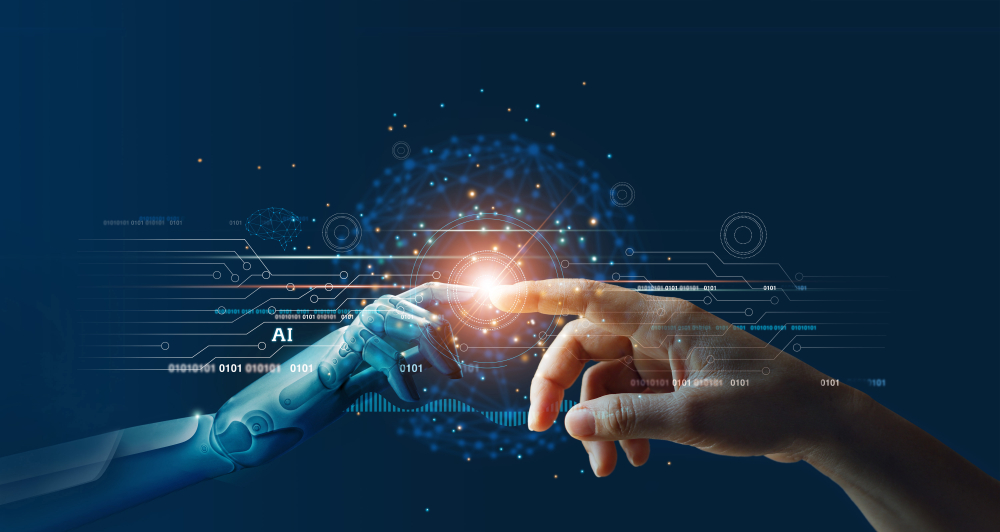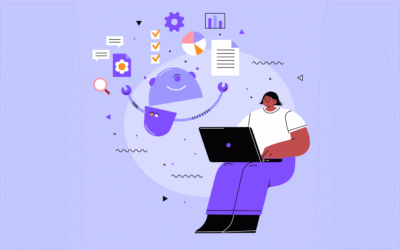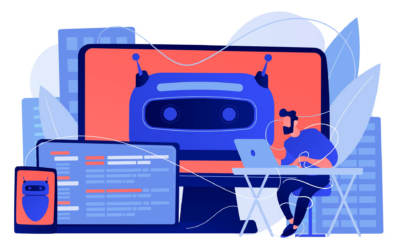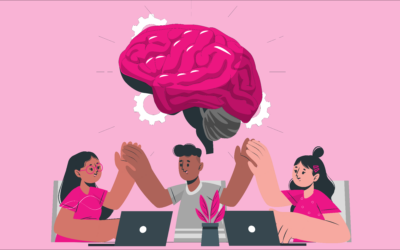Table of Content
What Is Machine Learning?
We can teach a computer to learn by using data, and this process is called machine learning, which uses statistics.
It involves using a computer to solve a problem without being explicitly programmed to do so. The machines can do this by detecting statistical patterns in data. Essentially, with machine learning, we use existing data and a training algorithm to learn a model of the data. We can then feed new data into that model that it’s never seen before and make predictions about the latest data. A machine learning model is essentially a function. It’s simply a mapping from an input to an output. In this case, it takes data as an input and produces a prediction as an output.
Machine Learning Process
This learning process works because datasets contain the lengths and heights of a selected group of products, which is labeled.
Next, we would feed these data into a machine learning training algorithm. The algorithm would inspect each row of data containing the length, height, and type of product. The algorithm would learn how length and height correlate with every kind of product. The machine learning training algorithm captures the statistical relationship as a mathematical model.
Finally, if we’ve done everything correctly, we can use this data to make predictions. We can feed this model a new product now seen before, and the model will tell us whether the new product is A or B. This is a vastly oversimplified explanation of machine learning. However, it captures the essence of what it is that we’re attempting to accomplish. We feed a set of data into a training algorithm. The algorithm produces a model, then we provide new previously unseen data into that model, and the model will predict what the data represent.
Appliance of Machine Learning
However, real‑world problems typically involve a lot more columns and rows of data. Besides, they usually include solving much more complicated issues in classifying products. There are a lot of tasks that we can perform with machine learning, such as classification, regression, clustering, and anomaly detection.
Classification is where we make a decision or prediction involving two or more categories or outcomes, such as deciding whether to accept or reject a specific result based on the input.
Regression is where we attempt to predict a numeric outcome based on one or more input variables, indicating the price of a house based on its features and the sale price of similar homes.
Clustering is where we group objects together based on similarities in their data, which includes grouping customers into marketing segments based on their consumption patterns. Anomaly detection is where we find observations in the data that are different from the expected data. Detecting a varying number of negative comments about a support case was opened by a customer.
Machine learning is artificial intelligence that gives machines the power to identify patterns, make decisions, and predict outcomes using data alone. It is a powerful tool for helping you and your business make better decisions, create more intelligent products, and automate manual labor. In addition, traditional machine learning has some severe limitations in the complexity of problems it can solve. To overcome these limitations, we need to learn more advanced tools like deep learning and reinforcement learning.
What Is Deep Learning?
Deep learning is a new type of data‑driven AI. It stacks multiple layers of machine learning models, one on top of the other.
This allows it to learn more complex inputs and produce more complex outputs. We typically create deep learning models using a neural network, a graph of nodes and edges based roughly on the organization of neurons in an organic brain.
Deep Learning Process
The nodes represent neurons in the brain. The edges represent the connections between the neurons. First, we feed data into the neural network via its input neurons, on which mathematical operations run on the data in each of the neurons. Then, each neuron forwards its resulting value to all of the other neurons connected to it. The process is executed multiple times for all nodes in the hidden layer of the network and all the edges in the hidden layer. Finally, the network produces a prediction from its output neurons. There’s a bit of math involved to make this entire process work; however, we’re going to skip over all the math to keep things simple.
Appliance of Deep Learning
A deep neural network is a network with more than one hidden layer. Adding more hidden layers allows the network to model progressively more complex functions. As a result, the data becomes more abstract with each additional layer in the network. However, we can also flip these deep neural networks around.
This allows us to use abstract inputs, like describing a person’s facial features, to generate complex outputs like entire art patterns programmatically. Deep learning takes us beyond using simple tabular data as input and producing simple predictions as output. With deep understanding, we can use complex data as input and have complex data as output which includes text, images, audio, video, and others.
Therefore, it is possible to perform object classification, video segmentation, and motion detection in real-time, but we can also generate synthetic output. Deep learning can provide a pretty powerful tool for automating tasks that involve complex relationships between complex data. However, it still has significant limitations when it comes to solving multi‑step problems. To solve these types of issues, we need to learn about use learning with reinforcement.
What Is Reinforcement Learning?
Reinforcement learning is a variation of machine learning that learns to solve problems by successive experimentation. It starts with an agent interacting with an environment. The agent is trying to achieve a multi‑step goal within the environment.
The environment has a state, which the agent can observe. The agent senses a state of the environment through what it sees and understands via other means. The agent has actions that it can take, which modify the state of the domain. Finally, the agent receives reward signals as it moves closer to its goal. The agent uses these reward signals to determine which actions were successful and which actions were not. The agent’s objective is to learn how always to choose the right action given any state of the environment that leads it closer to its goal. In recent years, we’ve combined deep learning with reinforcement learning to create deep reinforcement learning.
Today, the most successful reinforcement learning applications involve video games, computer simulations, and toy problems. However, this technology is beginning to move into the world of business. Shortly, you will likely see these algorithms perform various complex, multi‑step tasks in the real world. Reinforcement learning is artificial intelligence that can solve complex, multi‑step problems on its own. The machines can learn how to solve these problems without humans’ direct help, which is a compelling technology that will likely shape the future of artificial intelligence for many years to come.
To Conclude
Machine learning is not a product that is available to be purchased off the shelf. It is a collection of methodologies and technologies that fall under the same roof and differ from each other but have the ability and potential to offer great actionable insights into any business and organization. To learn more about machine learning please read our entitled article “Introduction to Machine Learning”.












0 Comments